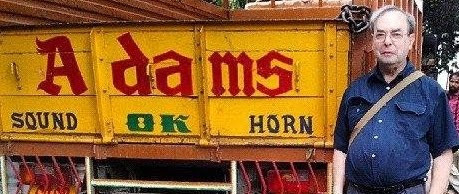I knew that I had them. I knew where these foolscap (not even A4) pages were stored, stuffed into the pages of an old road atlas of Yugoslavia. But, I believed that they contained little more information than the list of places that I had visited with a friend when we drove around Serbia in 1990, the last time that I visited Yugoslavia. I was under the impression that the notes contained only the itinerary that we had followed when we visited lesser-known places in the heart of Yugoslavia, a country that was soon to be torn apart by uncivil civil wars.
However, when I did eventually take a look at these papers more than 20 years after having written them, I realised that I was wrong. These pages contained much more than a simple listing of where we had been and on which day; they contained extremely detailed notes about what we did at each of these places. At the insistence of the Yugoslav friend with whom I had made this trip in May 1990 I had kept a detailed contemporaneous record of our Serbian 'odyssey'.
I re-read these notes whilst I was working on the finishing touches to my book about Albania, "Albania on my mind", and it occurred to me that it would be interesting to write something about the numerous trips that I made to Yugoslavia between about 1967 and 1990. Thus, the idea of writing "Scrabble with Slivovitz - Once upon a time in Yugoslavia" (which I shall now abbreviate to 'SWS') was born. At first, I thought of writing up my 1990 notes into a short book, but soon after this I decided that I would trawl through my memories and try to write about the decades of experiences that I gleaned from visiting Yugoslavia.
I knew that I had taken many photographs during my numerous visits to ths country and its neighbours, but I had not seen them for over 20 years. They were all colour transparencies taken on 35 mm film. When I moved house in about 1993, all of these pictures were placed, along with many other surplus goods, into a lock-up in a warehouse a long way from where I moved in with my wife. I had no idea what condition they were in and what was depicted on them. Consequently, most of the text of SWS was based on what memories that remained stored in my aging brain. The only part of the book that was based on more than pure memory was my description of the last trip that I made to Yugoslavia (that was in May 1990).
Just when the manuscript of SWS was nearly ready for publication, the company which managed the long-term storage of our goods contacted us urgently. The section of the warehouse in which our storage locker was located was due to be remodelled shortly. The company needed us to move our goods to a new locker, and felt that it would be best if we were present to supervise the moving. We agreed, and whilst the moving was in progress I decided to take a look at some of the numerous boxes of colour transparencies that I had not seen for over 20 years.In each box that I examined, the colour slides were in pristine condition. We returned home, and I ordered a slide scanner from Amazon.
When the scanner arrived, I returned to our locker, and selected several boxes of slides including most of those that I had taken during my trips to Yugoslavia and its neighbours (SWS also describes excursions that I made from Yugoslavia to Bulgaria and Hungary). I scanned furiously for about 3 weeks until the scanner failed to function any more. I hasten to add that this was not due to over-use but to faulty electronics, which the supplier was gracious enough to acknowledge by making me a refund. Since returning the scanner, I have devised my own slide scanning apparatus, which, incidentally, produces far better results than the one that I bought. I may describe its construction in a future blog.
I had originally decided to illustrate SWS with pictures 'borrowed' from the Internet, from old books and old tourist brochures in my possession, but the rediscovery of my slides made me change my mind. I illustrated the book with my own photographs. And this is where the process of writing SWS became interesting. As I scanned the slides and turned them into digital images (.jpeg files), I realised that many of the things that I had written about, and which were based on what I could remember, were things that I had also photographed. It was if the act of taking the photograph not only made changes on the emulsion of the 35 mm camera film but also on my grey matter, or wherever it is that memories are stored in my head. Christopher Isherwood once wrote, "I am a camera...". Well, it appears that so am I!
The object of this little essay was to illustrate something of how my memory works, and I hope that I have succeeded in doing that. However, many of you may be wondering why Scrabble? Slivovitz or Slivovica almost everyone associates with the Balkans, and especially the lands which were once known as 'Yugoslavia', but few would have reason to associate Scrabble, a word game developed in the USA in 1938, with travels in the Balkans. Well, if you want to know why I played Scrabble in Belgrade (sometimes after eating Chinese noodles in Novi Sad) as well as Sijarinska Banja and Studenica, you will have to read my book!
"SCRABBLE WITH SLIVOVITZ
- Once upon a time in Yugoslavia"
by Adam Yamey
is available by clicking HERE
OR via Amazon's online stores,
where it is also available as a Kindle version.


























